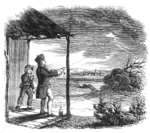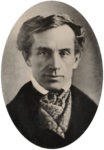Ben Franklin gets the shock of his life, The telegraph is born, and Microsoft allegedly makes a dirty move… It all happened This Week in Tech History.
This week in 1752 – Founding father, Benjamin Franklin finally got the opportunity he had been waiting for, to prove a connection between lightning and electricity. As the skies over Philadelphia darkened, he gathered his supplies, a simple kite, string, a house key and a Leyden jar, which was a primitive form of capacitor to store an electric charge. He then hurried out to a field and let his kite fly. Contrary to popular misconceptions, his kite was not struck by lightning. If it had been, he probably would have been killed. Instead, his kite picked up on the ambient electrical charge from the storm. When he noticed the loose threads on the hemp string standing erect, he moved his finger near the key and felt that same spark we’ve all experienced after walking on carpet in our socks. Franklin continued his work with electricity, ultimately perfecting an invention we still use in many buildings today – the lightning rod.
1840 – Samuel Morse received the patent for the telegraph. It was while Morse was aboard a ship returning from Europe in 1832 that the idea of the telegraph entered his mind. There were discussion on the ship about Michael Faraday’s recent invention of the electromagnet. Once Morse learned how the electromagnet worked, he came to believe that it could be used to send a coded message over a wire from one location to another. In 1843, Morse asked congress for $30,000 to build an underground telegraph line from Washington DC to Baltimore, Maryland. The funds were allocated and the following year, Morse sent the first telegraph message. By the end of his lifetime, there were already telegraph lines crossing the vast Atlantic, connecting the continent of Europe to America.
And this week in 1995 – Microsoft and Netscape officials met at Netscape headquarters in Mountain View, Calif. Notes taken by Netscape co-founder Marc Andreessen accused Microsoft of threatening “annihilation” if Netscape did not stop making their Netscape browser for the Windows market. Andreesen compared the meeting to a visit by Don Corleone from the Godfather films. He later joked “I expected to find a bloody computer monitor in my bed the next day.” Netscape refused to back down and in August that year, Microsoft introduced version 1.0 if its web browser, Internet Explorer, and a full-fledged browser war was on. Andreesen’s notes from that meeting were later used in the massive antitrust case against Microsoft.




